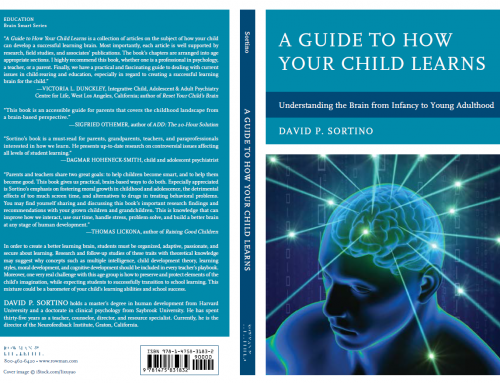In order to understand why certain students underachieve in school, we need to have a basic understanding of what major brain centers are associated with achievement and your student’s learning brain.
The left and right sides of a student’s brain must work together for effective learning to take place. Unfortunately, most school curricula cater to the left side or the sequential, mathematical, linear, verbal and logical areas of the student’s brain.
One important reason for low achievement is because a percentage of students who are right-brain dominant are often non-verbal.
Right-brain dominant students view the world abstractly and visually, thinking whole to part, rather than from initial part to whole. As a result, students with right-brain dominance may have problems linguistically with learning skills, showing lack of fluency and comprehension, difficulty sequencing lectures and school schedules, poor organization, all of which are often the MO of underachieving students. Students who demonstrate right-brain dominance could do well in arts integrated curricula such as a Waldorf or Montessori curriculum.
Also, gender can play an important role as to why certain students underachieve. Girls have an easier time than boys with most linguistic activities because a girl’s corpus column, the middle strip that runs across the center of our brain, is larger. This size difference allows for girls’ right and left side of their brain to cross talk, an essential element for good reading or linguistic skills.
When the left and right brains work as one, the child’s working memory is highly stimulated and he can experience greater memory storage and/or retrieval which support reading fluency and comprehension.
Another area of the brain that could affect underachievement has to do with REM sleep (rapid eye movement).
REM plays a crucial role with student learning. The brain requires a minimum of six REM cycles per sleep schedule for effective learning and for long-term storage of information.
The question that parents need to ask: is your student getting the necessary sleep necessary for the brain to transfer information from short-term memory to long-term memory. One of the causes of underachievement in schools is the lack of sufficient REM cycles or about eight hours of sleep per night. If students study hard but do poorly on tests, the problem could be lack of REM cycles or sleep, which is affects long-term memory.
Finally, a student’s emotional brain, located in the limbic system, can affect achievement as well.
For instance, students who have negative learning experiences often have difficulty retaining lessons because their learning experience is controlled by the amygdala, which is located in the limbic system. Positive learning experiences in the limbic system are associated with the hippocampus, seat of emotional relationships.
Students with positive emotional connection to learning experiences, have easy access to the higher centers of the learning brain, but underachievers with negative learning experiences can experience a fight or flight (stressful) response to learning which can short circuit stimulation of the higher centers of the learning brain.
For additional information, readers should consult Dr. David Sousa’s excellent book, The Learning Brain (Sage Publications, 2006) as to why some students underachieve in school and others do not.
Dr. David Sortino is a psychologist and retired teacher. Email him at davidsortino @comastcast.net.


